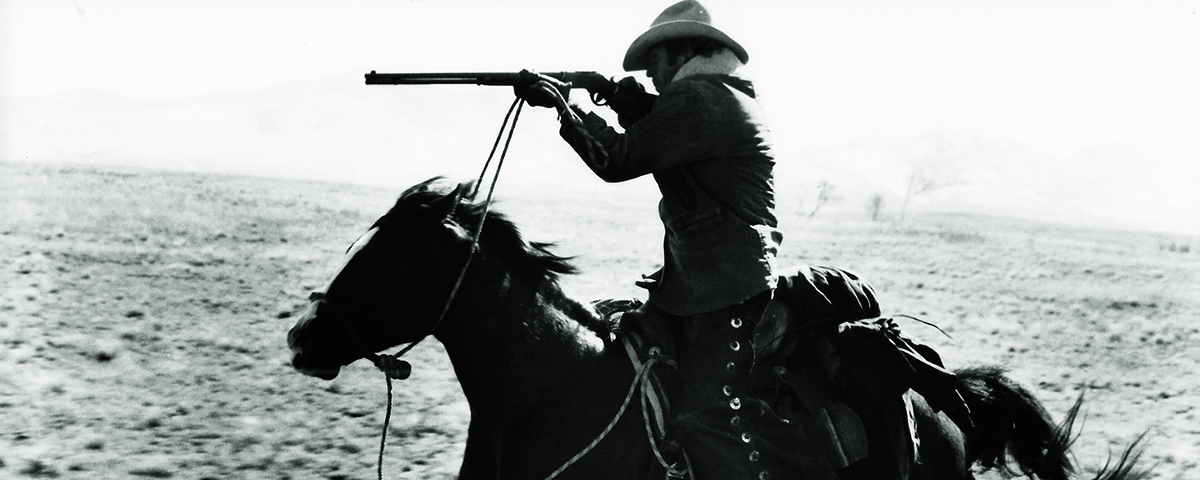Horns of a Dilemma
It only seems as if there was more than one Tom Horn. In the Southwest young Tom Horn earned a reputation as a bold scout during the Geronimo campaign, if he didn’t say so himself—and he did say so himself in his autobiography Life of Tom Horn, Government Scout and Interpreter. In Wyoming 40-something Tom Horn was the nationally known paid assassin tried for the 1901 murder of Willie Nickell, the 14-year-old son of a homesteader. “The dramatic newspaper coverage, typical of the ‘yellow press’ of that day, went far beyond merely reporting the facts and made the name of Tom Horn a household word,” writes Larry D. Ball, author of the 2014 biography Tom Horn in Life and Legend and of our December 2016 cover story. Horn himself had been loose with the facts of his life, whether spoken or written, as were the many writers and filmmakers who fueled his legend after Horn’s 1903 execution in Cheyenne.
Actors such as Barry Sullivan, George Montgomery and John Ireland played Horn on the big screen before David Carradine portrayed him in the 1979 CBS TV movie Mr. Horn. Scriptwriter William Goldman didn’t quite do for Horn what he had done earlier for two Wild Bunch outlaws in Butch Cassidy and the Sundance Kid. But Horn got an even bigger dose of the Hollywood treatment in 1980 when Steve McQueen played the title role in Tom Horn. Most written accounts of Horn’s adventure-filled life have included some fictionalized material. But since the 1990s Wyoming author Chip Carlson has shed new light on the real Horn, and Ball and John W. Davis, author of the 2016’s The Trial of Tom Horn, have followed in the same truthful vein.
But striving for the truth doesn’t mean we can verify all the facts. The biggest question/controversy surrounding Horn is whether or not he actually killed Nickell. Carlson, who back in the 1990s was gracious enough to take me to the remote scene of the shooting, believes someone else killed the boy. “It was someone in the neighborhood,” says Carlson. “The wife of a descendant of the feuding neighbors of Willie’s father once said, to me, ‘If I told you what I know, and the word got out that I had, a lot of people in my family would be very, very upset.’” Horn definitely bragged a lot, and he made a (disputed) confession to the Nickell murder, as well as to other murders. Davis says the man could be interesting and at times appealing but was hardly the hero some people have made him out to be. “His one overriding deficiency,” writes Davis, “was a big hole in the center of his soul, the inability to feel and understand the suffering of another human being. Horn could not have understood the deep grief of Willie Nickell’s family.”
Davis and Ball each maintain Horn received a fair trail. “Whether or not he assassinated young Willie,” Ball says, “remains a contentious issue, not only in present-day Wyoming but also among Western history buffs at large. Given the intensity of this controversy, it is not likely to be resolved for some time.” Although it might be a stretch to say I find myself on the horns of a dilemma, I am unable to decide whether Horn killed Nickell. I do know, thanks to Ball’s article, that if Horn did do the dirty deed, ranch manager and Horn friend John Coble, who had clashed with Willie’s father in 1890, probably should share in the blame. “Coble isn’t a man to forget,” said one anonymous contemporary. “He’s vindictive to the last degree and never forgets when he has a score to settle.” Coble paid the price for his friendship/partnership with Horn and eventually killed himself. Both men remain difficult to assess, writes Ball, who suggests, “Some unspoken tie did exist between them.” Perhaps the bond they formed in Wyoming was unlikely, but no more so than the friendship forged earlier between Wyatt Earp and Doc Holliday in Dodge City and Tombstone. WW
Wild West editor Gregory Lalire wrote the 2014 historical novel Captured: From the Frontier Diary of Infant Danny Duly. His article about baseball in the frontier West won a 2015 Stirrup Award for best article in Roundup, the membership magazine of Western Writers of America.





